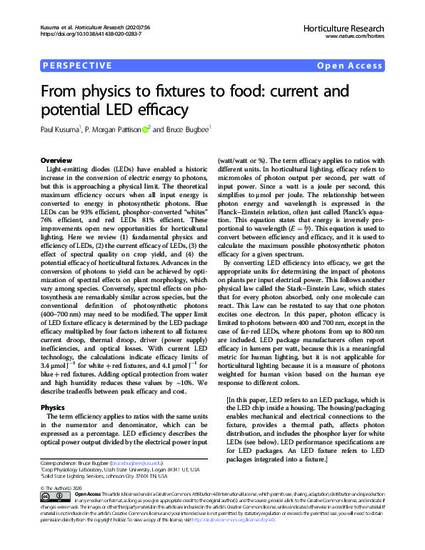
Light-emitting diodes (LEDs) have enabled a historic increase in the conversion of electric energy to photons, but this is approaching a physical limit. The theoretical maximum efficiency occurs when all input energy is converted to energy in photosynthetic photons. Blue LEDs can be 93% efficient, phosphor-converted “whites” 76% efficient, and red LEDs 81% efficient. These improvements open new opportunities for horticultural lighting. Here we review (1) fundamental physics and efficiency of LEDs, (2) the current efficacy of LEDs, (3) the effect of spectral quality on crop yield, and (4) the potential efficacy of horticultural fixtures. Advances in the conversion of photons to yield can be achieved by optimization of spectral effects on plant morphology, which vary among species. Conversely, spectral effects on photosynthesis are remarkably similar across species, but the conventional definition of photosynthetic photons (400–700 nm) may need to be modified. The upper limit of LED fixture efficacy is determined by the LED package efficacy multiplied by four factors inherent to all fixtures: current droop, thermal droop, driver (power supply) inefficiencies, and optical losses. With current LED technology, the calculations indicate efficacy limits of 3.4 µmol J−1 for white + red fixtures, and 4.1 µmol J−1 for blue + red fixtures. Adding optical protection from water and high humidity reduces these values by ~10%. We describe tradeoffs between peak efficacy and cost.
